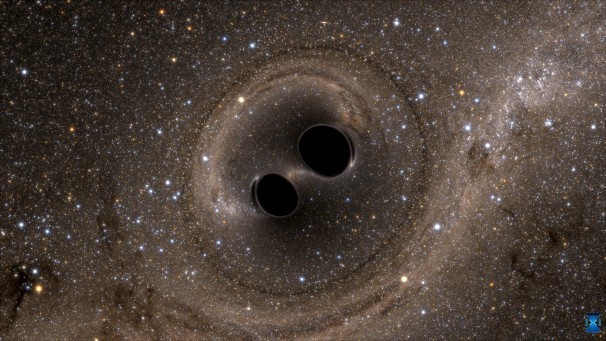Supermassive black holes might actually be super common

The elliptical galaxy NGC 1600, 200 million light-years away — shown in the center of the image and highlighted in the box — hosts in its center one of the biggest supermassive black holes known. (NASA/ESA Hubble Space Telescope)
Our universe might be as hole-riddled as Swiss cheese, according to a study published Wednesday in Nature. The discovery of a supermassive black hole in a sparsely populated region of space has scientists wondering if the behemoths might be more common than previously thought.
A black hole is an area where the matter is so dense that gravity becomes incredibly strong, keeping even light from escaping its pull. A supermassive black hole is one with a mass of around 10 billion times that of our sun, and they're usually found at the center of galaxies like our own. This is the first time a supermassive black hole – one 17 billion times as massive as the sun – has been found at the center of a relatively isolated galaxy.
[This is what it looks like when a black hole tears a star apart]
“What this is saying is that you don’t need these galaxy clusters to grow very massive black holes,” Poshak Gandhi of the University of Southampton, who was not involved in the study, told the Guardian. “That throws a wrench in the works of our understanding of how these monster black holes form – it throws the field wide open.”
The black hole sits in NGC 1600, a galaxy about 200 million light-years from Earth. Based on the movement of the galaxy's stars, the researchers say, it's possible that the black hole is actually a binary system – a pair of black holes brought together by a galactic merger, in the process of becoming one.
[This galaxy has two black holes – and one of them is very strange]
If the black hole isn't actually a binary, then it's a bit of an oddball. It's about 10 times more massive than scientists expect a black hole inside a galaxy of NGC 1600's size to be.
Then again, maybe it isn't an oddball. There's a lot we don't know about black holes, so it could be that this is just the first of many "unusual" finds.
"Rich groups of galaxies like the Coma Cluster are very, very rare, but there are quite a few galaxies the size of NGC 1600 that reside in average-size galaxy groups," lead author Chung-Pei Ma of UC Berkeley said in a statement. "So the question now is, 'Is this the tip of an iceberg?' Maybe there are a lot more monster black holes out there that don't live in a skyscraper in Manhattan, but in a tall building somewhere in the Midwestern plains."
